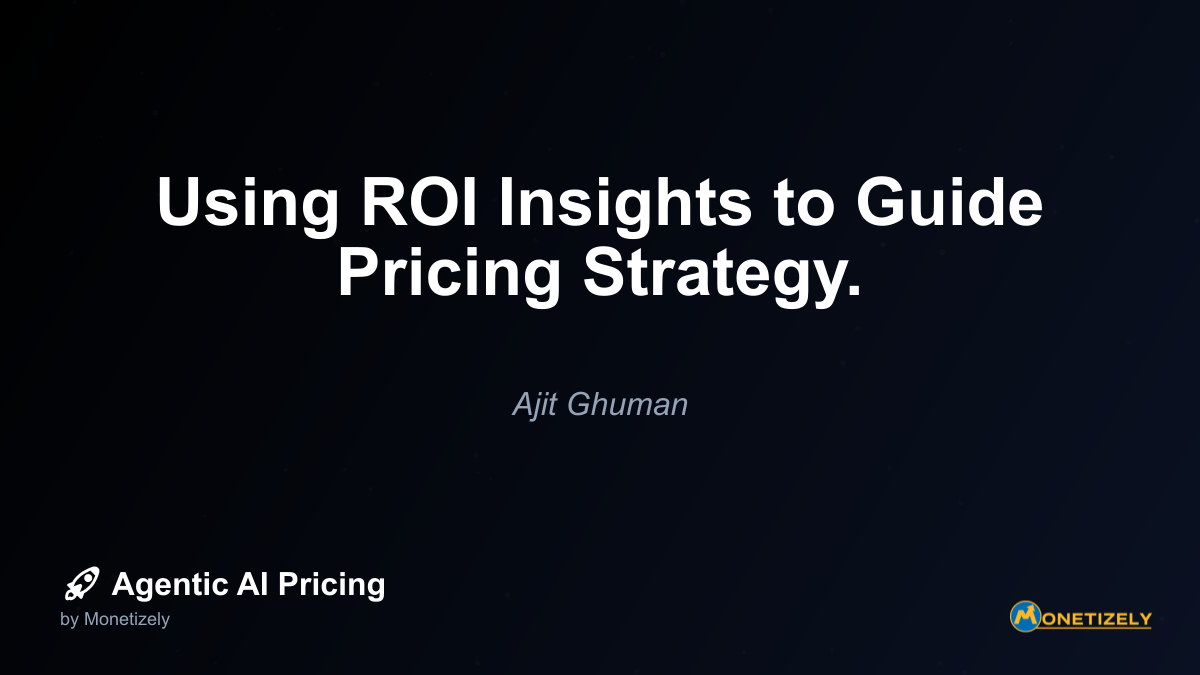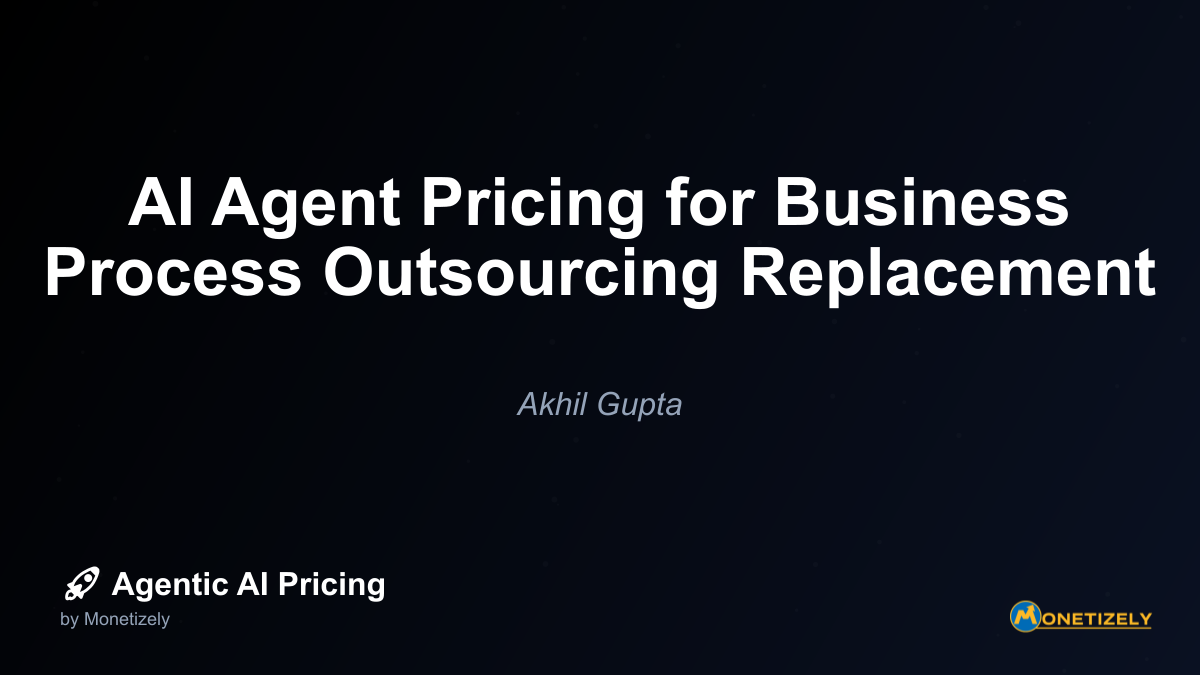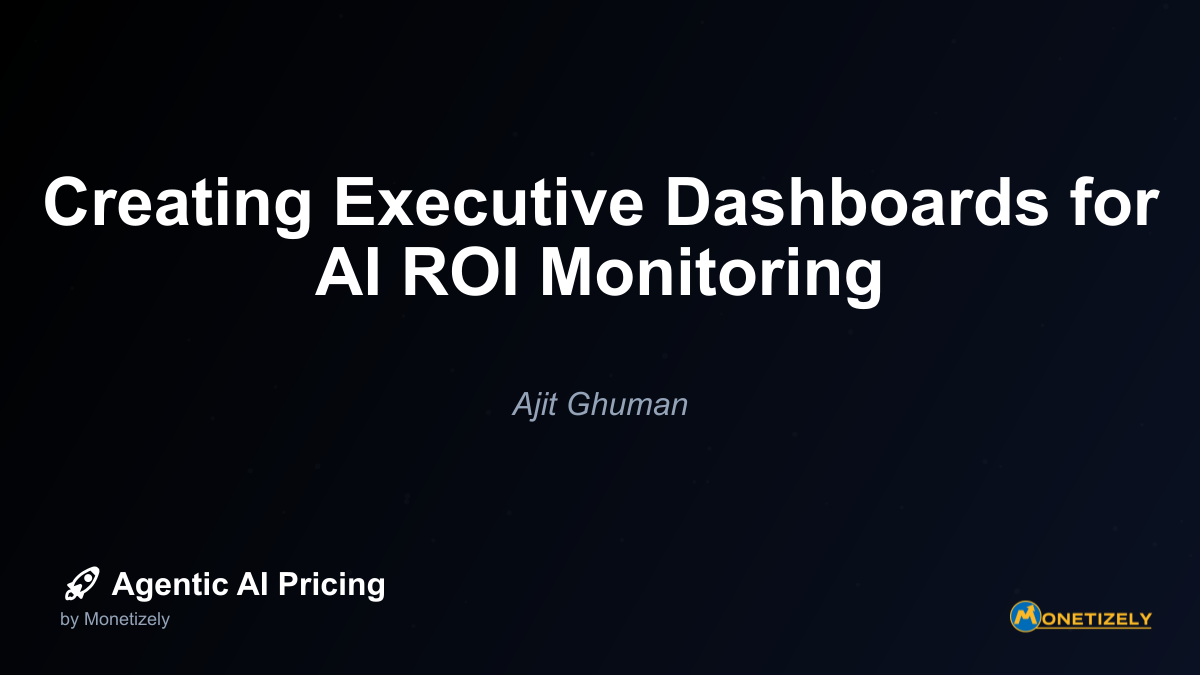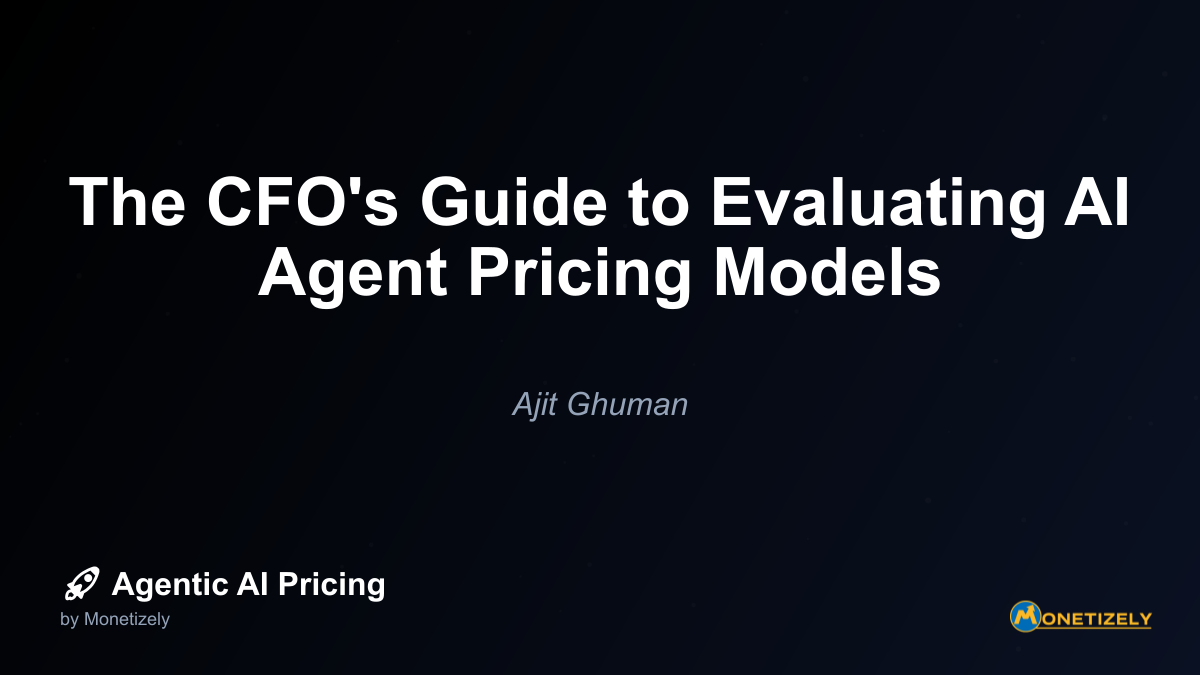· Ajit Ghuman · ROI and Value · 6 min read
Using ROI Insights to Guide Pricing Strategy.
AI and SaaS Pricing Masterclass
Learn the art of strategic pricing directly from industry experts. Our comprehensive course provides frameworks and methodologies for optimizing your pricing strategy in the evolving AI landscape. Earn a professional certification that can be imported directly to your LinkedIn profile.

For a deeper dive into building effective ROI calculators for AI implementations, check out our comprehensive guide on measuring GenAI ROI to set fair prices.
Crafting Value-Based Sales Narratives
Beyond calculators, sales teams need compelling narratives that:
Lead with value, not features: Start conversations with business outcomes, not technical capabilities
Tell customer success stories: Share concrete examples of similar customers achieving ROI
Address the “so what” question: Explicitly connect features to financial outcomes
Customize to buyer personas: CFOs need different ROI framing than technical buyers
Provide proof points: Offer third-party validation and benchmarking data
For example, rather than saying “Our AI agent processes 1,000 transactions per minute,” reframe as “Our AI agent processes transactions 10x faster than human agents, reducing processing costs by 75% and saving our average enterprise customer $450,000 annually.”
Training Sales Teams on Value Articulation
Sales representatives must be equipped to:
- Confidently discuss ROI metrics
- Customize ROI models to specific customer situations
- Navigate objections about ROI assumptions
- Position pricing in the context of value delivered
- Know when to involve ROI specialists for complex deals
This typically requires specialized training beyond standard product knowledge.
Common Challenges in ROI-Based Pricing
While value-based pricing offers significant advantages, it also presents unique challenges:
Proving Pre-Purchase ROI
The most common objection to value-based pricing is “prove it first.” Strategies to address this include:
- Free pilots with clear success metrics: Define specific KPIs that will demonstrate value
- Money-back guarantees: Offer refunds if agreed ROI targets aren’t met
- Phased implementation: Start small with measurable wins before expanding
- Risk-sharing models: Begin with lower pricing that increases as value is proven
- Reference customers: Leverage similar customers who have achieved documented ROI
Handling Value Perception Variations
Different customers may perceive your solution’s value differently based on:
- Their current process efficiency
- Internal cost structures
- Industry-specific factors
- Competitive pressures
- Strategic priorities
Your pricing strategy should account for these variations through:
- Segment-specific pricing
- Value-based discounting guidelines
- Negotiation frameworks based on proven value
- Custom ROI models for strategic accounts
Balancing Short-Term vs. Long-Term ROI
Some benefits materialize quickly (e.g., labor savings) while others accrue over time (e.g., improved decision quality). Your pricing approach should:
- Acknowledge timing differences in ROI realization
- Consider payment structures that align with value timing
- Provide both short and long-term ROI projections
- Set appropriate expectations about value realization timelines
Managing Internal Measurement Challenges
Implementing ROI-based pricing requires internal capabilities:
- Data collection systems
- Customer success measurement processes
- Analytics expertise
- Cross-functional alignment
Without these capabilities, ROI claims lack credibility and value-based pricing becomes difficult to sustain.
Case Studies: ROI-Based Pricing in Action
Enterprise AI Assistant Provider
A company providing AI assistants for customer service teams implemented ROI-based pricing with these components:
ROI Drivers Identified:
- Reduced staffing needs (40% fewer agents required)
- Improved first-contact resolution (28% improvement)
- Decreased average handle time (35% reduction)
- Higher customer satisfaction (22-point NPS increase)
Pricing Approach:
- Base platform fee ($10,000/month for enterprise)
- Per-seat fee for human agents ($250/month)
- Volume-based transaction fees with declining tiers
- Annual ROI guarantee of 300%
Results:
- Average deal size increased by 65%
- Sales cycle shortened by 33%
- Customer expansion velocity improved by 48%
- Renewal rates exceeded 95%
AI Document Processing Platform
A document automation platform serving legal and financial services firms:
ROI Drivers Identified:
- Attorney/analyst time savings (15-20 hours weekly per professional)
- Error reduction (87% fewer critical errors)
- Faster document processing (72% reduction in turnaround time)
- Compliance improvement (99.8% accuracy on regulatory requirements)
Pricing Approach:
- Tiered subscription based on document volume
- Premium pricing for specialized document types
- ROI calculator showing hourly cost savings
- Pricing representing approximately 25% of calculated first-year savings
Results:
- Commanded premium pricing (40% higher than competitors)
- 78% conversion rate from ROI-focused demos
- Expanded from legal to financial services using same ROI framework
- Successfully raised prices annually based on documented value delivery
Implementing an ROI-Based Pricing Strategy: A Step-by-Step Approach
For vendors looking to transition to ROI-based pricing, we recommend this phased approach:
Phase 1: Value Discovery (1-3 Months)
- Interview existing customers about realized value
- Develop preliminary ROI models based on customer input
- Identify key value metrics that correlate with pricing
- Map customer segments by value received
- Gather competitive intelligence on pricing approaches
Phase 2: Value Quantification (2-3 Months)
- Formalize ROI calculation methodology
- Develop ROI calculator tools for sales team use
- Create value benchmarks by customer segment
- Document case studies with specific ROI examples
- Define value capture targets (percentage of created value)
Phase 3: Pricing Structure Design (1-2 Months)
- Develop pricing tiers aligned with value segments
- Define value-based packaging of features/capabilities
- Create pricing communication materials
- Establish discount governance based on value variations
- Design transition approach for existing customers
Phase 4: Go-to-Market Preparation (1-2 Months)
- Train sales team on value articulation
- Develop marketing materials highlighting ROI
- Create sales enablement tools supporting value selling
- Establish ROI verification processes
- Prepare customer success for value measurement
Phase 5: Launch and Optimization (Ongoing)
- Pilot with select customers/segments
- Gather feedback on value perception
- Refine ROI models based on actual results
- Adjust pricing to optimize value capture
- Continuously improve value measurement
The Future of ROI-Based Pricing for Agentic AI
As agentic AI continues to evolve, ROI-based pricing approaches will become increasingly sophisticated:
Automated Value Measurement
Advanced AI solutions will increasingly include built-in ROI tracking, automatically measuring their impact and reporting value created. This capability will strengthen the connection between pricing and value while providing vendors with powerful data to inform future pricing decisions.
Dynamic Value-Based Pricing
Some vendors will implement dynamic pricing that automatically adjusts based on measured value delivered. For example, a solution might have a base subscription plus variable components tied to specific outcomes achieved.
Value Guarantees
As vendors gain confidence in their ROI models, more will offer formal value guarantees—if customers don’t achieve specified ROI thresholds, they receive partial refunds or credits. These guarantees reduce adoption barriers while demonstrating vendor confidence.
Ecosystem Value Pricing
For platform solutions, pricing will increasingly reflect ecosystem value—not just direct ROI from the core solution but also value created through integrations, partnerships, and network effects.
Conclusion: ROI Insights as Pricing Strategy Foundation
In the rapidly evolving agentic AI market, ROI-based pricing represents a powerful approach for vendors seeking to align their commercial models with the value they deliver. By systematically measuring and communicating this value, vendors can:
- Justify premium pricing based on documented outcomes
- Differentiate from competitors focused on feature-based selling
- Build stronger customer relationships centered on business impact
- Accelerate sales cycles with compelling ROI narratives
- Increase customer retention by demonstrating ongoing value
The journey to ROI-based pricing requires investment in measurement capabilities, sales enablement, and customer success processes. However, vendors who make this investment gain significant advantages in market positioning, pricing power, and customer alignment.
As agentic AI continues to transform industries, the vendors who most clearly connect their solutions to measurable business outcomes—and price accordingly—will be best positioned to capture their fair share of the value they create.
By starting with ROI insights and working backward to pricing strategy, vendors can ensure their commercial approach reflects the true value of their innovations while resonating with customers increasingly focused on measurable returns from their AI investments.
Co-Founder & CEO
Ajit is the author of Price To Scale, a top book on SaaS Pricing and is the Founder of Monetizely. Ajit has led and worked in pricing and product marketing at firms like Twilio, Narvar and Medallia. His work has been featured in Forbes and VentureBeat. Ajit regularly consults with software companies from Seed stage to post-IPO on pricing strategy. Ajit is also a highly-rated co-instructor for 'The Art of SaaS Pricing and Monetization' on Maven.
Pricing Strategy Audit
Let our experts analyze your current pricing strategy and identify opportunities for improvement. Our data-driven assessment will help you unlock untapped revenue potential and optimize your AI pricing approach.




